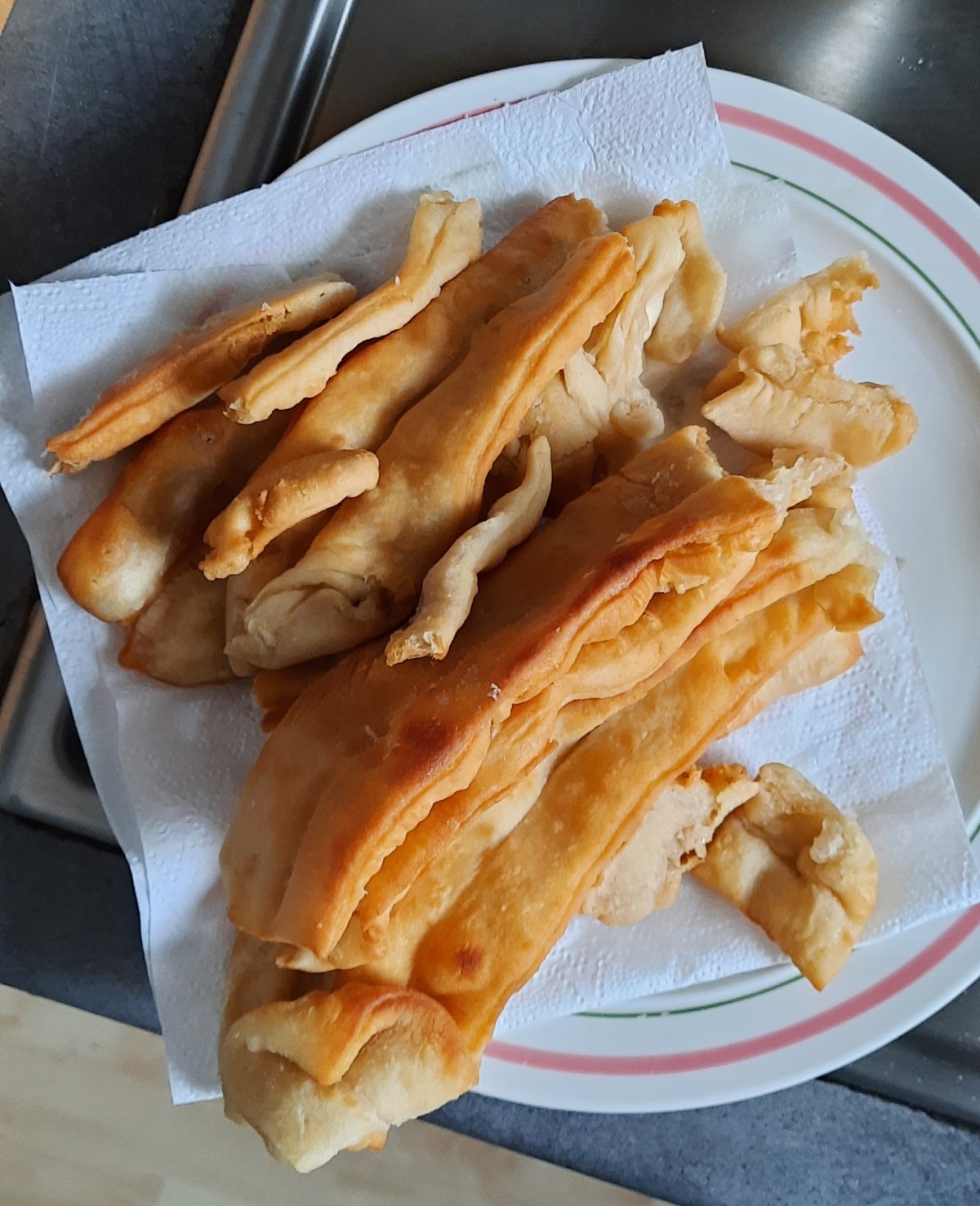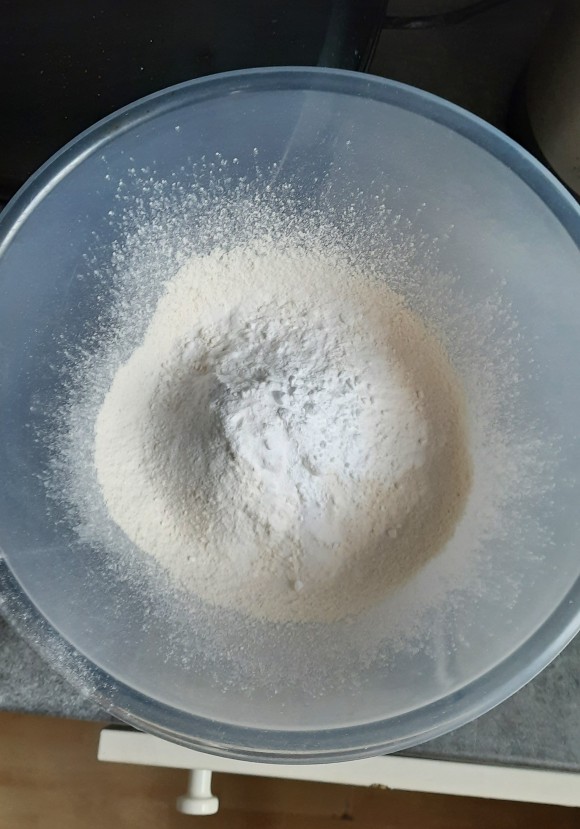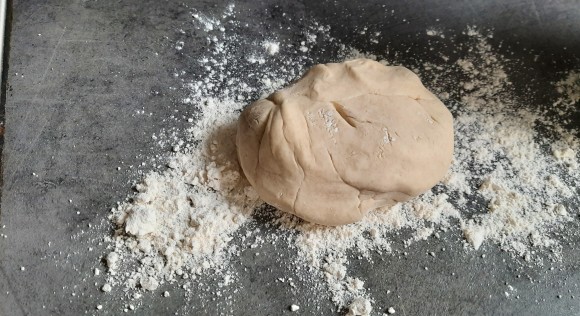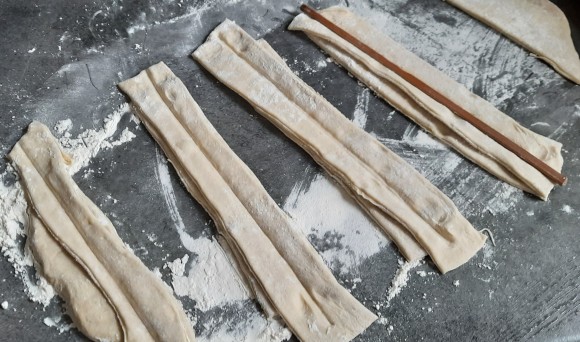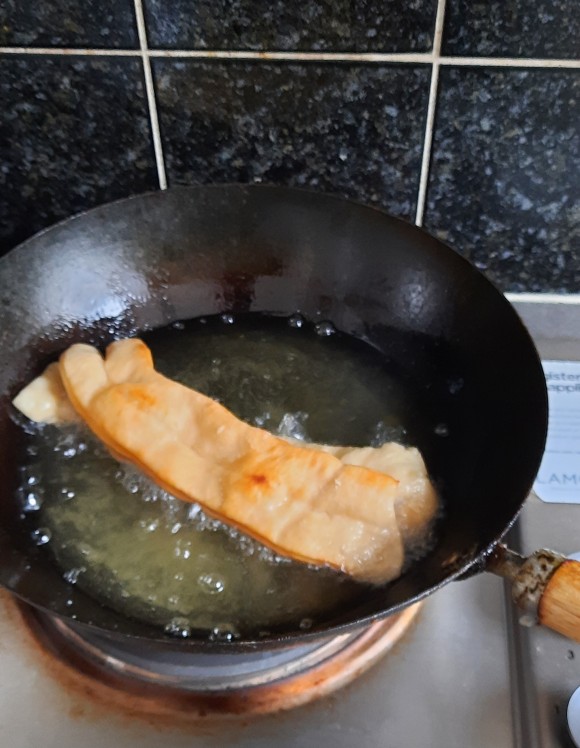I’m always perplexed by this growing demand for authenticity and representation. I mostly cook and eat vegan, so most dishes I cook and eat may not fit narrow definitions of tradition. In the last two decades, I only consume translations.
In the Philippine language, dishes are not as narrowly defined as with some European recipes. The name of a dish sometimes relates to its method of preparation. “Inadobo” would mean “to adobo something”. That something can be anything, whether meat or vegetable. Adobo itself is a loan word from the Spanish adobar, and could mean different things in Latin America and the Hispanic world. But Spanish and new world adobo usually evokes a marinade, sauce or seasoning to preserve a meat dish and would involve paprika, oregano, salt, garlic, and vinegar. In the Philippines, adobo was the convenient name given by the Spanish colonizers to indigenous cooking methods that also use vinegar. What people think of as Philippine adobo is usually Manila adobo. A plethora of regional variations exist. Yet another case of the homogenising reach of capital cities. There is no one true method. There is no one genuine recipe.
Growing up abroad, my sense of food identity has been reliant on how my family cooks and whatever food gets shoved my direction during dreaded family reunions in various places of home. Humbà was something of a puzzle. I don’t really know what “hinumbà” would mean. I’ve misidentified it as adobo a few times. It had a lot of the usual adobo ingredients. But it has a different sweetness and richness. It had chocolate.
So I investigated. Not all humbà would have chocolate. In the Visayas, the name given to the central group of islands in the Philippine archipelago, where humbà was supposed to originate from, the usual list of ingredients would include pork (usually pork belly), soy sauce, vinegar, black peppercorns, garlic, bay leaves, dried banana blossoms, and fermented black beans (tausi, 豆豉) sweetened with muscovado sugar. Other variations I’ve encountered would have atsuete (annatto seeds), potatoes, pineapples, fried saba bananas (similar to plantains, but sweeter), and the meat could be chicken, buffalo and goat. But it seems it was only in Pambujan, Northern Samar where my mother is from that they would use chocolate.
I only became aware of its relative strangeness when explaining this dish to friends. Cooking with chocolate for savoury dishes is unheard of in most of the archipelago. Champorado doesn’t count. Friends in Manila would usually make a yuck face. Others would be curious if it would be something like Mexican mole.
I don’t make my version of humbà often. But when I do, it’s usually in large batches that I can keep in the fridge for a long time. Like most stewed and braised dishes, it’s usually better days after it’s first cooked (as might have been the case when they first devised this dish). I also cook it to make a point: that, however unlikely, this combination of ingredients work. It not only works, but works really well. It just sounds wrong to the uninitiated. Recipes, like language, are not static things. New words are made-up or incorporated from other languages all the time. Slang becomes dialect and language becomes language. I never really cared much for perfect diction.
My vegan translation of humba would have tofu (fried or baked) or whatever readily available vegan protein. I’d saute lots of garlic and onions in neutral coconut oil with the tausi and dried spices (a teaspoon of black peppercorns, a teaspoon of annatto powder, 3 bay leaves, 3 star anise) until they get aromatic before adding in the protein. And I mean lots of garlic. At least a full head of garlic and a large red onion to a half a kilo of protein. When the onions start to get translucent, this is followed by a potato cut into large chunks, a handful of dried banana blossoms, some slices of pineapples (canned chunks would do) and a few tablespoons of crushed gula melaka or muscovado sugar, light soy sauce, and coconut vinegar (2 parts light soy sauce to 1 part vinegar). Then comes some water or stock (lightly salted vegetable or mushroom or a combination of both) that’s just enough to immerse everything. With this you slowly dissolve a tsokolate tablea (a tablet of unrefined chocolate, or, if you can’t find it, some unsweetened bakers’ dark chocolate). Stir occasionally. It should be sweet, salty, and tangy. I would stew this just until the large potato chunks start breaking apart, and the overall consistency would start to thicken. This takes an hour or so in a low boil. Last to add would be the saba bananas (or plantains) that’s been cut into inch-thick discs and fried beforehand. You add these fried bananas in the last 5 minutes, any sooner would disintegrate them. All this is done while listening to the music of Yoyoy Villame. It sets the mood. (If you’re new to Yoyoy or Philippine cuisine, start with his song Magellan.) You will need silence or other music as you’re digging in. To serve, I would garnish this with chopped green onions and crispy fried garlic, served with sides of sliced fresh cucumber and tomatoes for some freshness to balance richness of the humbà, along with some green papaya atsara (pickled green papaya, store-bought or made from scratch) for a bit of tart, and finely sliced red bird’s eye chilies or labuyo peppers for a bit of heat. While usually eaten over rice, I like to eat this as a cuapao (割包), a kind of sandwich in a fluffy steamed bun. As always, I’m curious about the next remix.

Merv Espina is an artist, researcher and severely disorganised serial organiser based in Metro Manila. He co-initiated the Kalampag Tracking Agency (est. 2014) and Kamuning Public Radio (est. 2016), helps run WSK Festival of the Recently Possible (est. 2008) and Nusasonic (est. 2018), used to program Green Papaya Art Projects (2010 to 2020), and contributes to Radio alHara Palestine. His practice capitalizes on uncomfortable situations to poke at the holes of history and the anxieties of archives, resulting in installations and screenings, seminars and zines, music and writing anthologies, pirate radio hacks and noisy choreographies, food fiestas and perfume production, among many other whatnots. He was also in the curatorial teams of SUNSHOWER: Contemporary Art from Southeast Asia 1980s to Now (Tokyo, 2017), the 15th biennial VIVA EXCON (Roxas, 2018), and Motions of this Kind (London, 2019). His less random projects have found themselves in the Jakarta Biennale 2015 and Yokohama Triennale 2020.
Lyra Garcellano’s research centers on the investigation and critique of art ecosystems, and her output is often presented in installations, paintings, moving images, comics and writing. She is particularly interested in how prevailing economic models impact artistic practice.
Her works have been part of group exhibitions such as Sunshower at the Mori Art Museum and National Art Center in Tokyo and at Kaohsiung Museum of Fine Arts in Taipei, Debt at the Fourth Qalandiya International at Palestine, and the Jakarta Biennale.
She is a graduate of interdisciplinary studies of the Ateneo de Manila University and holds a BFA degree in studio arts and an MA in art theory and criticism from the University of the Philippines.






























